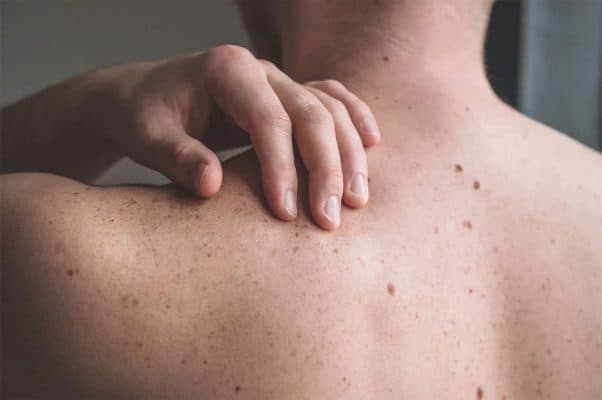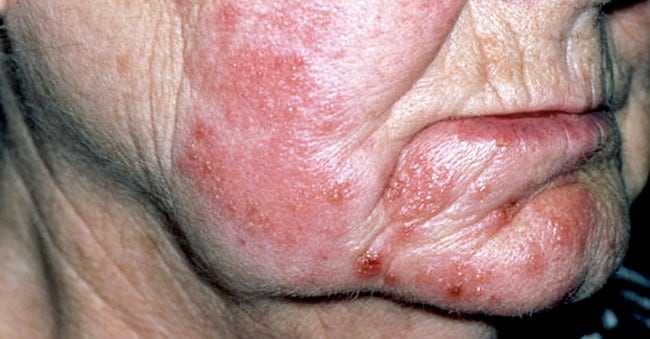Most people think they know what shingles look like. They are wrong. Shingles can be a lot of different shapes and sizes, but what do you need to know about them? In this article we will discuss what shingles look like, what causes them, what symptoms they cause, how to diagnose if you have been infected with the virus that causes it and what treatments are available.
What is shingles?
Shingles is a disease that causes what looks like a painful rash on your skin. It can be very itchy and cause you to have trouble sleeping, eating or going about your daily life because of the pain. The shingles virus infects one in five people worldwide but mostly affects adults over 60 years old.
One can get shingles when the varicella-zoster virus, which causes chickenpox, reactivates when their immune system weakens.
After you have had chickenpox, the virus stays in your body in a dormant state. For some people, it never reactivates but for others, usually those who are older or have a weakened immune system, the virus can reactivate and cause shingles.
The earliest symptom of shingles is usually tingling or burning or pain on a single side of your body. This may be followed by a rash that starts as small red bumps and then blisters. The blisters can grow and merge together to form large areas of raw skin. The rash usually lasts between two and four weeks but may last longer in some cases.
Find out more about what causes shingles.
What does shingles look like?
Shingles can look very different from person to person. The rash may be on any part of your body and can range in size from a few inches to cover the entire body. It is often described as looking like chickenpox, with blisters that are red, swollen and contain fluid. However, not all cases of shingles have this classic appearance and some people only get a small number of bumps or no rash at all.
The best way to tell if you have shingles is to see your doctor if you think you might have it. They will ask about your symptoms and do a physical examination. They may also take a sample of the fluid from the blisters for testing. Early diagnosis and treatment is the best way to reduce the length and severity of the illness.
If you are diagnosed with shingles, there are a number of treatments that can help ease your symptoms.
Shingles blisters
Shingles blisters are red, swollen and contain fluid. These blisters usually lasts between two and four weeks but may last longer in some cases. Most blisters don’t leave any scars. However, for individuals with weakened immune systems, blisters may take longer to heal.
Blisters can erupt and ooze. They may then become somewhat yellow, flatten out, and become slightly flattened.
Shingles can look very different from person to person. The rash may be on any part of your body and can range in size from a few inches to cover the entire body. It is often described as looking like chickenpox, with blisters that are red, swollen and contain fluid. However, not all cases of shingles have this classic appearance and some people only get a small number of bumps or no rash at all.
Crusting and scabbing
Scabs start to form as the blisters dry up. It might take one to two weeks for each blister to fully harden. Your pain may lessen somewhat during this phase, although it might endure for months or even years.
There is little risk of spreading the virus after all blisters have completely crusted over.
Shingles belt
Shingles are often seen around the rib cage or waist, appearing like a “belt” or half belt. This formation may also be referred to as a “shingles band” or “shingles girdle.”
The shingles belt may cover a considerable surface on one side of your midsection. Tight clothing might be especially difficult to wear due to its position.
Shingles on the face
These are also known as ophthalmic shingles. The nerve that controls facial sensation and movement in your face is affected by ophthalmic shingles. The rash appears around your eye and over your forehead and nose in this sort. Headache might be present with ophthalmic shingles.
Symptoms of shingles include redness and swelling of the eye, corneal or iris inflammation, and eyelid drooping. Shingles can also induce double vision or blurred vision.
Shingles all over the body
Around 20% of persons who develop shingles have a rash that spreads across more than one dermatome, according to the US Centers for Disease Control and Prevention (CDC). The dermatomes are separate skin regions supplied by distinct spinal nerves.
Shingles is most often induced by varicella zoster virus (VZV). The rashes caused by shingles appear on the dermatomes, or nerve roots that control different areas of the body. When zoster affects three or more dermatomes, it is known as disseminated, or widespread zoster. In these situations, the rash might resemble chickenpox rather than shingles. This is more probable if your immune system is weak.
First signs of shingles

The very first indication of shingles is lingering, tingling, or burning tingling pain on just one side of the body. This may be followed by a rash that starts as small red bumps and then blisters. The blisters can grow and merge together to form large areas of raw skin. The rash usually lasts between two and four weeks may last longer in some cases.
These early warning signs are usually felt in the location where the rash will develop:
- Pain
- Burning
- Tingling
- Itching
Symptoms of shingles
While having localized pain and rashes are definite tell-tale signs of shingles, other symptoms may include:
- Upset stomach
- Chills
- Fever
- Headache
How to treat shingles
There are number of treatment options for shingles. Most people who get it will not need to see a doctor or take special medications but some cases can be severe and may require medical attention. If you have any symptoms, don’t wait – see your doctor right away if possible.
The first line of defense is antiviral medicines that reduce the severity and length of the illness by speeding up how fast your body clears the virus from its system. These drugs include acyclovir (Zovirax), famciclovir (Famvir) and valacyclovir (Valtrex). Acyclovir ointment can also help with pain relief as well as relieve itching caused by healing blisters.
Pain relievers such as ibuprofen (Advil, Motrin) or acetaminophen (Tylenol) may also be helpful.
Cool compresses can soothe the itchy rash and help keep blisters from bursting.
Moisturizers can help reduce dryness and itching.
If you have severe pain, your doctor may prescribe an oral narcotic medication such as oxycodone (Percocet) or hydrocodone (Vicodin).

